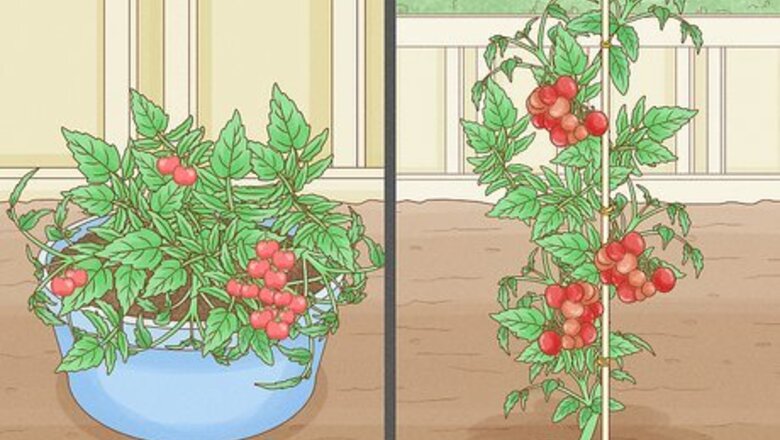
views
Sowing Your Tomato Seeds
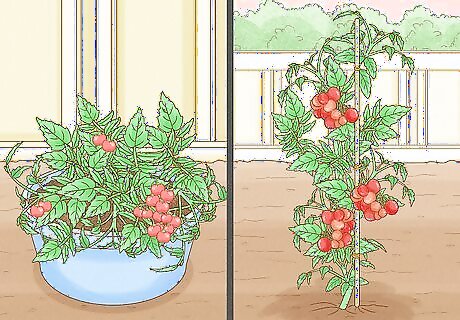
Choose a suitable variety. You have some choice when it comes to tomatoes, especially between determinate (bush) and indeterminate (vining) varieties. Both will have advantages for indoor gardens, so think about which kind is best for your purposes. Indeterminate tomatoes can be ideal for indoor gardens. Unlike determinate varieties, they will naturally climb and need a cage, trellis, or stake. But they’ll continue to grow and produce fruit all season long. If you are looking for a variety of tomato that will bear a lot of fruit and ripen quickly, choose a plum or cherry indeterminate. Indeterminate tomatoes aren’t compact and need more space than determinates, though. If your space is limited, try smaller, dwarf determinate varieties. These should fruit over a 4-6 week period. Heirloom indeterminates include Pink Ping Pong, Siberia, Silvery Fir Tree, Tommy Toe, and Yellow Pear. Hybrid indeterminates include Micro Tom, Orange Pixie Tomato, Patio, Red Robin, Small Fry, Tiny Tim, and Totem. Determinate cherry tomatoes include Washington Cherry and Gold Nugget. Hybrid determinates include Cherries Jubilee and Terenzo Hybrid.
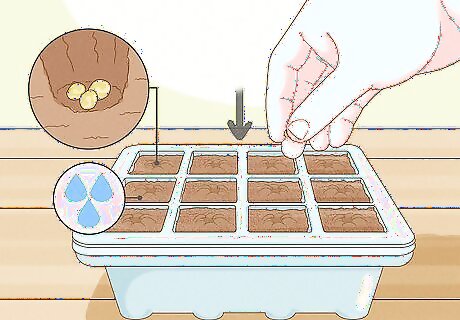
Plant your tomato seeds in a starting mix. Wet your seed starter mix or potting soil with fresh water until it is moist. Fill a seedling starter tray with a moist mix or soil. Poke one hole in the soil of each cell—the hole should be ¼ inch deep. Insert up to 3 seeds into each hole with a tweezers or your fingers. Cover the holes with moist soil or mix. Sow the seeds 60-80 days before you intend to harvest your tomatoes. If you don’t have seed trays, you can use plastic yogurt containers or cans. If you are planting the seeds in a used container, clean the container with a 1:10 bleach:water solution.
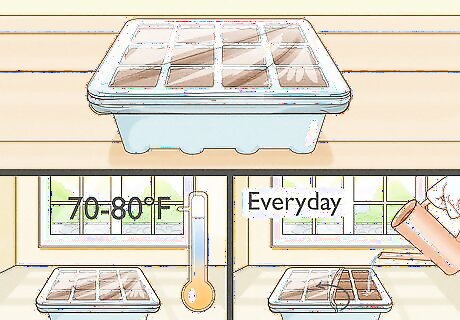
Promote germination with consistent heat and water. Germination is the process of transformation from a seed to a seedling. Tomato seeds will germinate within five to ten days. There are several actions you can take to speed up this process and to ensure its success. Immediately after planting the seeds, cover your seedlings with a lid or a sheet of plastic wrap—this will prevent the soil from drying out. Move the cells to a warm location. Throughout the germination, maintain a daytime soil temperature between 70 to 80℉ (21 to 27℃). If you can not heat the space to at least 70℉, consider purchasing a heat mat or placing the plant cells in a sunny location. Everyday, lift up the lid and water the seeds as needed.
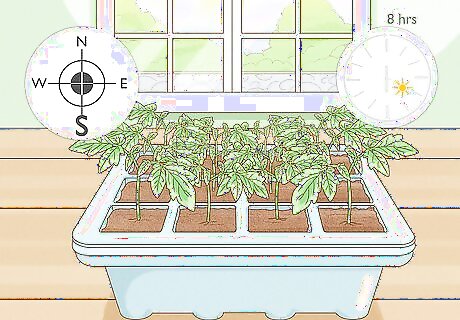
Move your sprouted seedlings to a sunny or artificially lit location. Tomato seedlings and plants require at least 8 hours of light each day. Without adequate light, tomato plants will become weak. As soon as the seeds have sprouted, discard of the cover and provide your seedlings with ample light. If you have a south-facing window, place the cells directly in front of the window. If you do not have a south-facing window, shine a grow-light or a fluorescent light on the seedlings. Artificial light sources should be placed a few inches from the tops of the seedlings. As the plants grow, you will need to adjust the height of the lamps. If you are keeping your plants on a windowsill or in front of a window, rotate them frequently to ensure that every side is exposed to light.
Transplanting and Fertilizing Your Seedlings
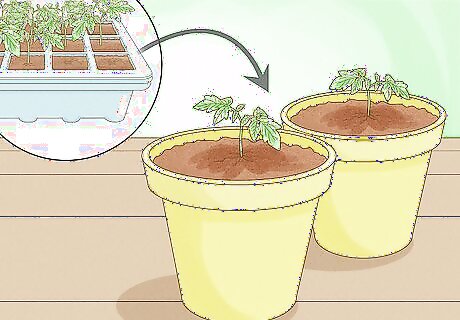
Transplant your seedlings into large pots. As soon as your seedlings grow one to two sets of leaves, they are on the verge of outgrowing their cells. At this time, transplant the seedlings into a pot that is large enough to hold a mature plant—a five to ten gallon container is ideal. Remove the seedlings from their cells without breaking the roots. Hold the seedling between two fingers and place your palm over the soil. Flip the cell upside down and gently tap the bottom of the cell until the seedling emerges. Loosen up the roots by “tickling” the outer roots. Bury the seedling up to the little fuzzy hairs at the base of the plant. These fuzzy hairs will become roots. Water the seedling generously after transplant.
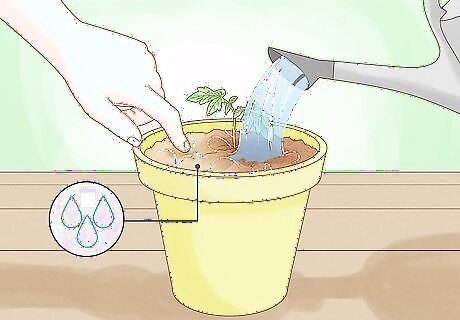
Water your plants when dry. After you transplant your seedlings, it is imperative that you continue to water the plants regularly. Assess the soil everyday for dryness by sticking your finger into the soil. If the soil is dry, water the the plant. If the topsoil is dry but the rest is moist, water at a later time. Allowing the soil to dry out completely will yield rough-bottom tomatoes.
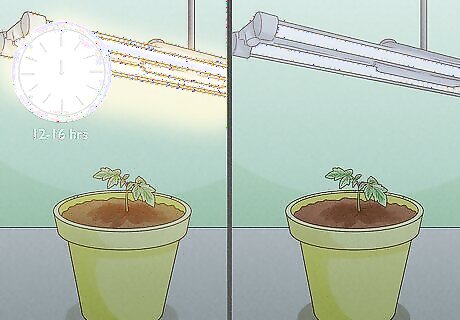
Create day and night time light conditions. While tomato plants require plenty of light, they also need a period of darkness. If you are using artificial lights, you need to mimic the natural rising and setting of the sun. Turn on your lights in the morning. After twelve to sixteen hours, turn off the lights and allow the plants to rest in the dark. You can set your lights on a timer.
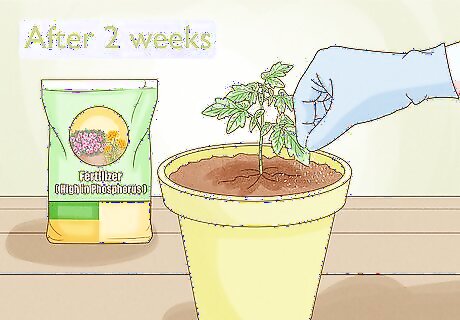
Fertilize the seedlings. Indeterminate tomato varieties continue to grow and produce all season. To sustain this intense cycle, you must provide your tomato plants with adequate nutrients. Within two weeks of transplanting, apply your first fertilizer treatment. Following the initial application, continue to fertilize your plants every few weeks until it is mature. Use a fertilizer that is high in phosphorous. Follow the instructions on the product.
Pollinating, Training, and Harvesting
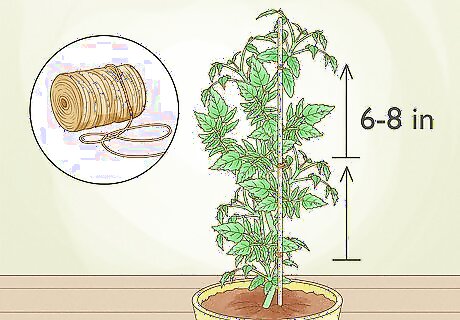
Train your plant to grow up. Indeterminate tomato plants require support from a stake or trellis for their vines. It is possible to “train” your tomatoes to grow up a trellis, stake, or cage. You can begin to train your tomato plants approximately one month after transplanting. If you are using a single stake or a single-string trellis, you will train the main stem. Attach the stem to the support device with twine every six to eight inches. Tie the twine in a loose knot to avoid damaging the plant. As suckers grow (vines that appear between the main stem and branches) prune them by snapping them off with your fingers at the joint. If you are using a cage or multi-string trellis, you will begin by training the main stem. Place a cage over the plant while it is small – it is harder to get cages over mature plants. Tie the main stem to the support device with twine every six to eight inches. Allow the first three or four suckers that appear to remain on the plant. Train these suckers in the same manner—tie the suckers to the trellis or cage every six to eight inches as they grow. As new suckers appear, prune them.
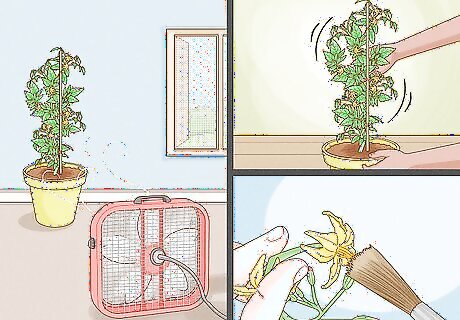
Assist in the pollination process. When tomatoes are grown outdoors, bees, birds, and the wind distribute their pollen and develop fruit. When you grow tomatoes indoors, you must simulate this process. You may achieve this by: Directing a fan towards your plants to mimic the wind. Tapping or shake the main stem of each plant gently with your finger. Pollinating the plants by hand with a paintbrush or cotton swab. You can gently rub these on the flowers, distributing pollen to each.
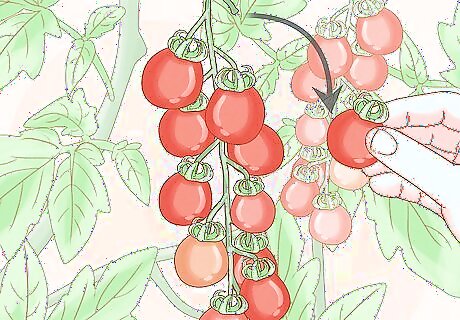
Gather your harvest. Indeterminate tomatoes produce fruit within sixty to eighty days after planting. They will continue to produce fruit all season long. You will know that your tomatoes are ripe when they have turned a vibrant and even red, yellow, or pink. The tomatoes should be slightly soft when squeezed. To pick the tomato, grasp it near its stem and twist it until it snaps off.

















Comments
0 comment